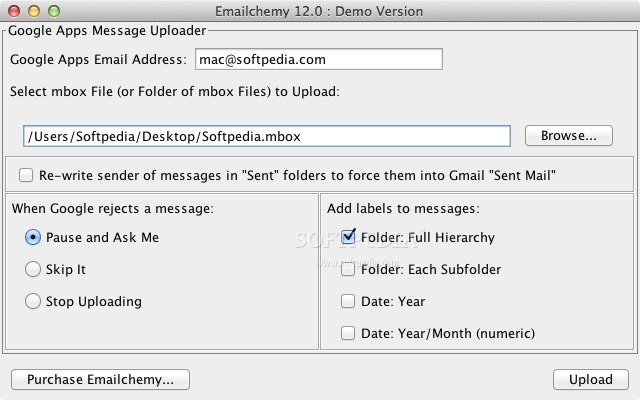

NOTE: Before importing new archives into ePADD, ensure that the previous user properly cleaned up ePADD from their session. It will eventually be included in your SIP-level metadata.

Translate Exchange-style email address to Internet-style (SMTP).Save encrypted message text as attachment.Preserve optional Extension and User-Defined header fields.Log source file checksums before and after conversion.Replace disallowed filename characters with a dash.Allow non-English characters in new file and folder names.Automatically clear de-duplicator memory after conversions.Confirm the following settings are selected in Emailchemy, under Tools > Options >:.Note that the readpst command line utility is not recommended. If your email archives are in a different email format, they will need to be converted using Emailchemy, an email format converter located on the CD imaging workstation. This documentation is up-to-date as of ePADD v5.0 (May 2018).ĮPADD works with live email accounts (including IMAP) and email archives in the MBOX format.
#EMAILCHEMY KEY MAC#
CCA recommends installing ePADD into Mac or Windows environments. ePADD, developed by Stanford University Libraries, allows the processing archivist to search through email, restrict possibly sensitive materials, create access and preservation copies, and provide a user-friendly access interface.įull documentation on ePADD can be found in their User Guide and the Community Forum.ĮPADD can be downloaded here, and installation instructions can be found in the User Guide. Email formats require additional processing, as they often contain sensitive or personal information, and as a format, are difficult to access by an end-user.


 0 kommentar(er)
0 kommentar(er)
